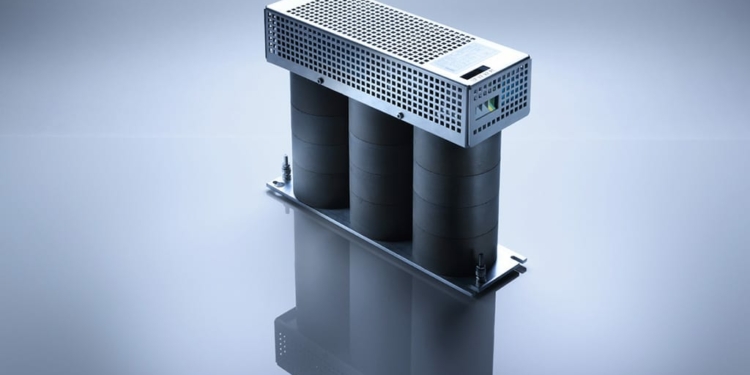Source: SMP news
Graben-Neudorf, Germany, October 2019. SMP has developed “All Mode” EMC filters with high frequency stability. The High Frequency Composite Materials (HFCM) developed and manufactured by SMP are effective for frequencies up to the gigaHertz range and satisfy all of the requirements to which modern SiC and GaN applications are subject.
The All Mode design damps both differential mode and common mode noise. By combining HFCM and All Mode technology it is possible to reduce the number of filter components needed in the system by about 50 percent. Among other advantages, this also means that common mode chokes or filters can be dispensed with.
EMC filters reduce interference currents and voltage spikes in power converter systems which are generated by parasitic effects and cyclic elements of the system. The material plays an important part in this, as SMP’s Managing Director Johannes Gemenetzis explains:
“The target is to achieve a stable inductance at the working point over the entire frequency spectrum in order to maximize the interference suppression. Compared to the standard technologies which use materials such as ferrite, electrical steel sheets and nanocrystalline ribbon, the All Mode EMC filters are up to 40 percent lighter and reduce interference levels by as much as 40 dB[µV].”
Because they are made from magnetostriction-free materials, the All Mode filters are noiseless. “Due to the stability of their inductance, we realize our EMC filters with a smaller inductance, whereby a high dynamic of the system is achieved,” says Johannes Gemenetzis.
“The voltage spikes which occur periodically with the switching frequency of the inverter are immensely reduced. So the life-time of the electric motors is much longer. The efficiency of the entire system is further improved due to very low losses of the materials. Moreover, fewer filter components are needed, so volume is reduced and the cost effectiveness of the power electronic system as a whole is increased substantially. The fast switching SiC and GaN semiconductors place high demands on the magnetic materials. Decisions are based on materials! With the development and production of our own materials, we have solutions for every application.”
The family-owned company with headquarters in Graben-Neudorf in Germany specialises in the development and manufacture of filter systems, inductive components and magnetically soft moulded parts. The portfolio of components produced by the company is designed to handle currents up to 2000 A, for special applications up to 3000 A, and frequencies up to the gigaHertz range.
The materials have high saturation induction of up to 2 Tesla. The components are produced with dimensions from 19 mm to 300 mm and weights from 0.05 kg to 130 kg. The filter systems and inductive components are used in power electronics, automation and drive technology applications for industries such as electromobility, railway and marine engineering, medical technology, aerospace and renewable as well as conventional power generation.































